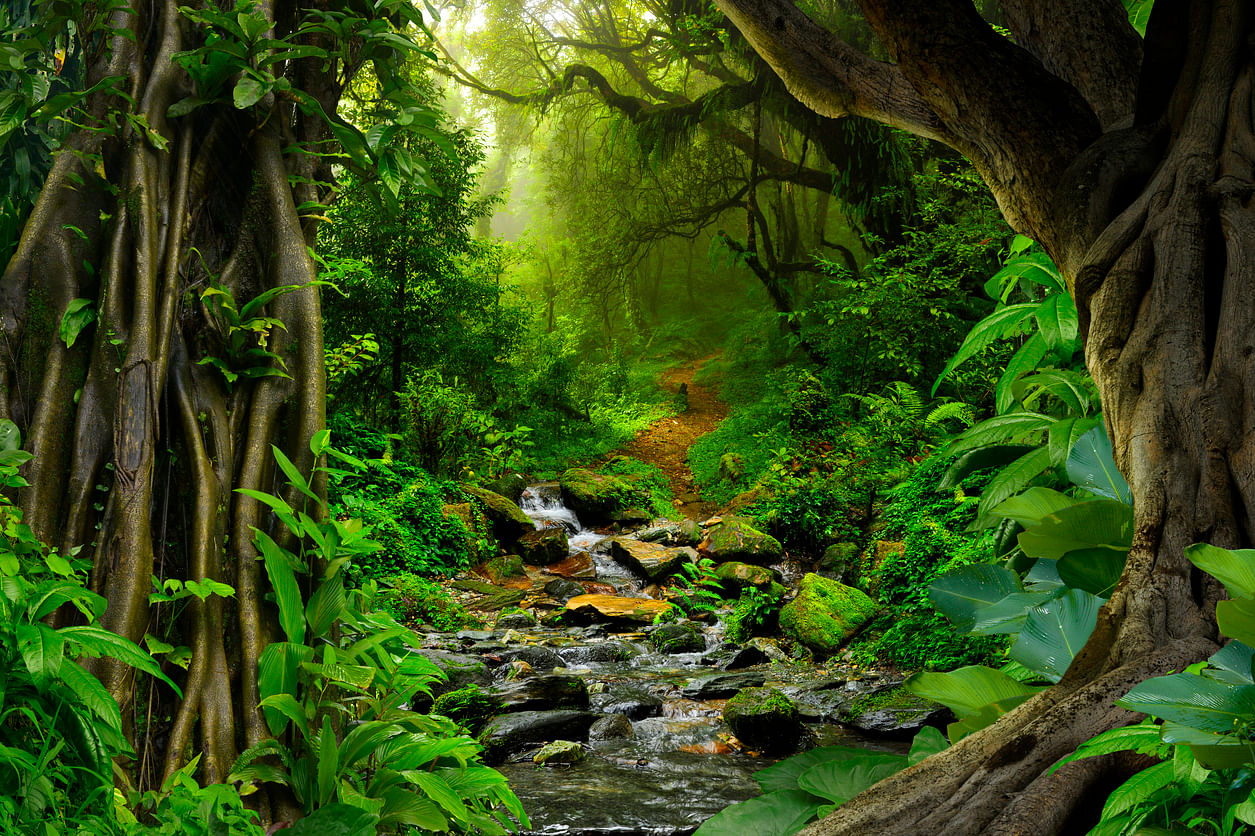
We are stardust brought to life, then empowered by the universe to figure itself out—and we have only just begun,” said the famous astrophysicist Niel DeGrasse Tyson. We are not only a part of nature but also made from nature. This leads us to think: if we are made out of nature, why not draw inspiration for the inevitable climate apocalypse from nature itself? What did this Earth Day mean to us?
One of the best ways to celebrate Earth Day and rejoice this beautiful planet is to draw lessons from it and make it a part of our daily existence, lest we have to learn these lessons the hard way. The Climate crisis is probably the greatest threat to humanity thus far, with the capability to devastate civilisations and wipe out entire species. Naturalist Sir David Attenborough reaffirmed this too. If we are to avert this, our best chance is to learn from Earth itself.
Balance is the first inspiration we could draw from. Mother nature is great at creating balanced ecosystems. In ecology, all natural systems are in a state of equilibrium and disturbing even a single element can disrupt other connected systems. Nature even has a way to self-regulate any imbalances that are caused over time. Are human-made systems balanced? In our greed for more, we have fuelled excessive consumption and have gone off the balance. Do our economic progress indicators factor in balance? Does GDP specify how much growth a nation achieved without disturbing the ecological balance? Shouldn’t our climate action efforts focus on restoring balance?
Equally critical is the lesson of resilience. The come-back of nature and biodiversity during the pandemic lockdowns gave ample evidence of nature’s resilience. The resurgence of flora and fauna, including dolphins, flamingos and kangaroos to name a few, was witnessed in almost every corner of the world during this phase. How can we emulate nature’s ability to bounce back and develop systems that are resilient?
A skyscraper in Dubai is no different than the one in Singapore or New York. Not so in nature. Adaptation is yet another strong inspiration that can be drawn from nature. In nature, adaptation is integral to survival. But most of the human-made systems refuse to adapt.
Nature hails coexistence and celebrates diversity. In a forest ecosystem, the same water body serves a goat as well as a leopard. It serves all kinds of animals and trees that coexist. The whole notion of human v/s nature is misleading. There is no ‘v/s’ here. Humans are a part of nature and therefore must learn to coexist in harmony with nature and all its life forms.
Creativity is embedded in every facet of nature. Only creativity can help us extract ourselves out of the mess we have created. Climate crisis is a complex and dynamic interplay of challenges and therefore calls for creative solutions. Incremental innovation won’t help much. We need radically creative solutions that factor in the complexity and change dynamics of an interconnected world, be it a breakthrough innovation in energy, or water or transportation. Whatever it is has to be game-changing and done fast.
Living in harmony
Humanity has shown how effective it is at generating and building mountains of waste. On the contrary, in nature, there is no concept of waste. A byproduct of one system feeds another system and so on. For instance, organic waste produced by animals serves as the manure for flora and that produced by plants serves as food for animals. So is the case with oxygen. Can we humans, too, eliminate the concept of waste and imbibe zero-waste value-chains across systems and sectors? India produces more than 1.50 lakh metric tonnes (MT) of solid waste per day, of which more than 50% ends up in landfills. It is high time we start reimagining waste as a resource.
This leads us to the wonderful notion of circular loops that we see demonstrated in nature. There is something about circularity and in nature, almost everything is circular – be it the water cycle, food cycle, nitrogen cycle or carbon cycle. There is an underlying deep insight out there. Circular loops are sustainable.
As we notice, there is a lot of talk about inclusion all over the globe. We need not look far. In nature, everyone has a role to play. Even the tiniest speck has a role to play and there is no discrimination whatsoever. We don’t need to be reminded how powerful a virus can be. Isn’t that one of the most effective concepts to demonstrate the power of an inclusive world where everyone is empowered to play their role?
Whether we pause to notice or not, a flower is blooming, a butterfly is emerging, a cloud is bursting. Evolution is as old as the genesis of life itself. Everything is evolving, changing and becoming.
The most profound lesson to draw is probably that of nature’s self-sufficient yet selfless attribute. Mother nature is always telling us to be self-sufficient, yet selfless. What would that mean for human systems? Can we as individuals or organisations, build self-sufficient systems that won’t necessarily feed our own self-centred interests? Even our Vedic concept of ‘pancha mahabhoota’ or five elements of nature advocate the idea that these elements come together to form a human being. If only we humans begin to see the interconnectedness around us and devise solutions keeping nature’s inspirations in mind, the celebration of Earth Day on April 22, will gain a whole new meaning and help us live harmoniously with the planet.
(Chauhan is the Global Director, Planet & Climate, Ashoka and Raghavendra is the SVP of Safe Water Network)